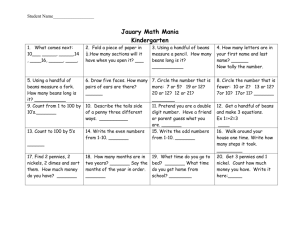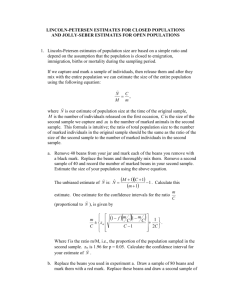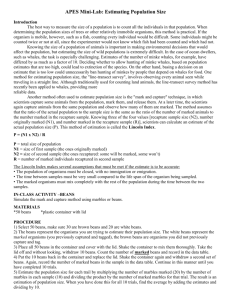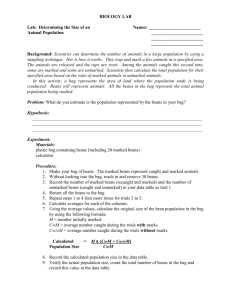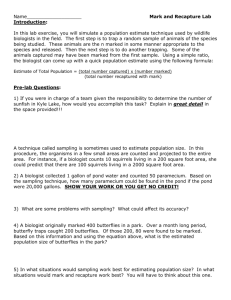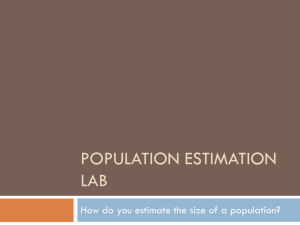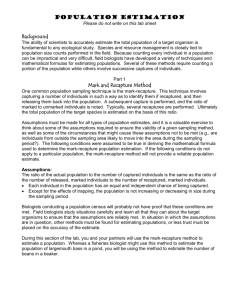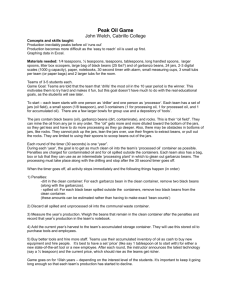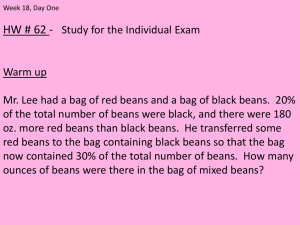Population Size Estimation
advertisement
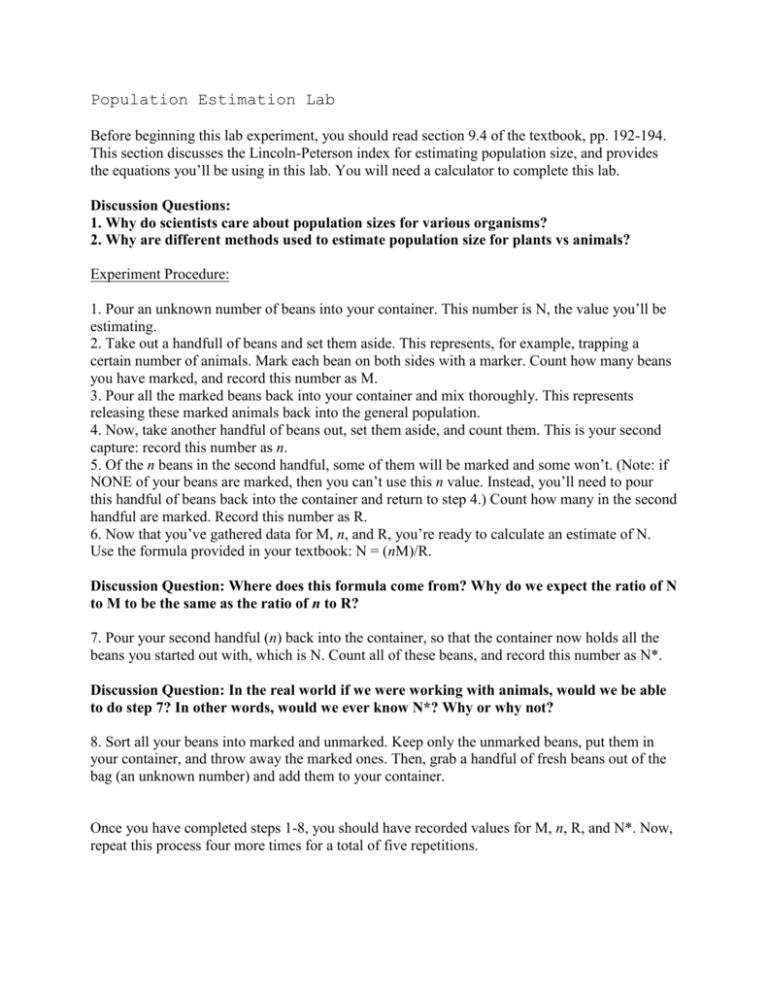
Population Estimation Lab Before beginning this lab experiment, you should read section 9.4 of the textbook, pp. 192-194. This section discusses the Lincoln-Peterson index for estimating population size, and provides the equations you’ll be using in this lab. You will need a calculator to complete this lab. Discussion Questions: 1. Why do scientists care about population sizes for various organisms? 2. Why are different methods used to estimate population size for plants vs animals? Experiment Procedure: 1. Pour an unknown number of beans into your container. This number is N, the value you’ll be estimating. 2. Take out a handfull of beans and set them aside. This represents, for example, trapping a certain number of animals. Mark each bean on both sides with a marker. Count how many beans you have marked, and record this number as M. 3. Pour all the marked beans back into your container and mix thoroughly. This represents releasing these marked animals back into the general population. 4. Now, take another handful of beans out, set them aside, and count them. This is your second capture: record this number as n. 5. Of the n beans in the second handful, some of them will be marked and some won’t. (Note: if NONE of your beans are marked, then you can’t use this n value. Instead, you’ll need to pour this handful of beans back into the container and return to step 4.) Count how many in the second handful are marked. Record this number as R. 6. Now that you’ve gathered data for M, n, and R, you’re ready to calculate an estimate of N. Use the formula provided in your textbook: N = (nM)/R. Discussion Question: Where does this formula come from? Why do we expect the ratio of N to M to be the same as the ratio of n to R? 7. Pour your second handful (n) back into the container, so that the container now holds all the beans you started out with, which is N. Count all of these beans, and record this number as N*. Discussion Question: In the real world if we were working with animals, would we be able to do step 7? In other words, would we ever know N*? Why or why not? 8. Sort all your beans into marked and unmarked. Keep only the unmarked beans, put them in your container, and throw away the marked ones. Then, grab a handful of fresh beans out of the bag (an unknown number) and add them to your container. Once you have completed steps 1-8, you should have recorded values for M, n, R, and N*. Now, repeat this process four more times for a total of five repetitions. Population Estimation worksheet Name: Date: Repetition M n R Estimate of N = (nM)/R N* (actual count of N) 1 2 3 4 5 Discussion: 1. Compare the estimates of N which you computed (fourth column) with the actual count N* (fifth column). Does this estimation technique seem to be working? Do you notice a consistent bias (either too high or too low) in your estimates? If so, what might be causing this? 2. Imagine that instead of using beans, you were trying to estimate a population of sparrows. How would you conduct this experiment? What would M, n, and R represent in terms of sparrows? 2. Let’s say that, in attempting to estimate the population size of sparrows, you mark the birds by painting a bright spot on their backs. It turns out that this bright spot of paint makes the sparrows more visible to predators such as hawks. How would this marking technique bias your estimate of population size?
